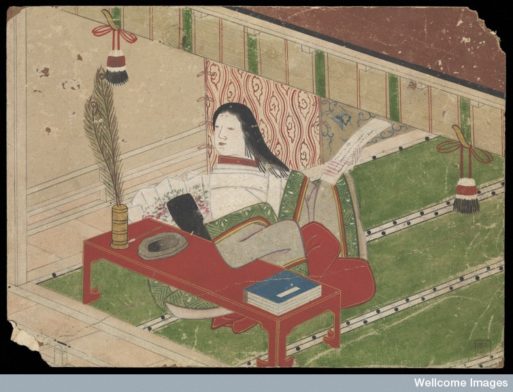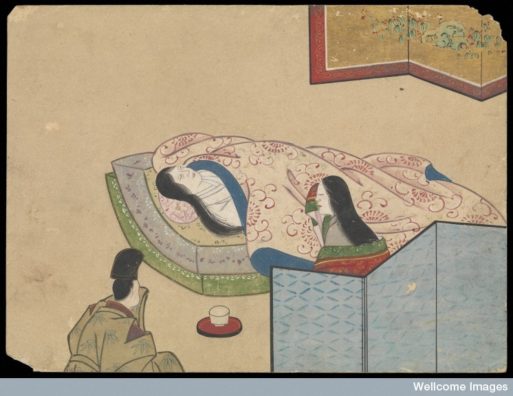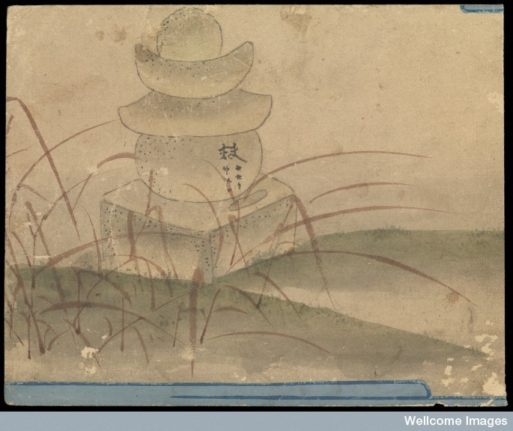The kusozu are traditional Japanese watercolor paintings that gained popularity between the 13th and 19th centuries. The paintings depict graphic images of death and decay.

The first paintintg in the series shows a dying woman holding her farewell poem in her hand
Credit: wellcomeimages.ac.uk
Kusozu were created in the Buddhist tradition to meditate on the temporary nature of the physical world. The intention of these works of art was not to create fear or sadness. Rather the artists hoped that bringing attention to the way things change over time would allow people to live fully according to their own values and to die a good death when the time comes.
One example of these paintings, probably created in the 1870s, is a series of nine paintings entitled “Kusozu: The Death of a Noble Lady and the Decay of Her Body.” I will describe each of the pictures so you can get an idea of the art form
The first painting shows a woman in a kimono. She is obviously very ill and holds a scroll in her left hand upon which she had written her poems of farewell. In the second painting the woman has died, surrounded by her family.

Painting two
Credit: wellcomeimages.ac.uk
In the third painting, the body of the woman lies outside, covered by a blanket. She is still fairly intact, although there are early signs of decay. The ensuing paintings show more evidence of decomposition. It is easy to see bloating and a marbled appearance on the skin.
In the seventh painting, scavengers are depicted feeding on her body, and in painting number eight, there is little of the woman left. The final painting contains no sign of the her, only a memorial structure with the Buddhist death name written in Sanskrit.

The final painting in the series shows a Buddhist memorial to the woman who has died
Credit: welcommeimages.ac.uk
In addition to contemplating the fleeting nature of life, kusozu was also important as a medical and scientific tool. Little was known about the human body and the process of decay in in the 19th century. The artists who observed and recorded the breakdown of the body did the scientific community a great favor. In fact, “Kusozu: The Death of a Noble Lady and the Decay of Her Body” is still on display at Forensics: The Anatomy of Crime in London.
At first glance, kusozu may seem like a morbid custom, but its intent was positive. It reminded people that we all die and that we must live according to our wishes and values for as long as we can.

 “Kuzosu: the Death of a Noble Lady and the Decay of Her Body”
“Kuzosu: the Death of a Noble Lady and the Decay of Her Body”


 John Mulaney’s “Funeral Planning” on Netflix: No Real Plan
John Mulaney’s “Funeral Planning” on Netflix: No Real Plan

 Composting Bodies Is Now Legal in a Dozen States
Composting Bodies Is Now Legal in a Dozen States














